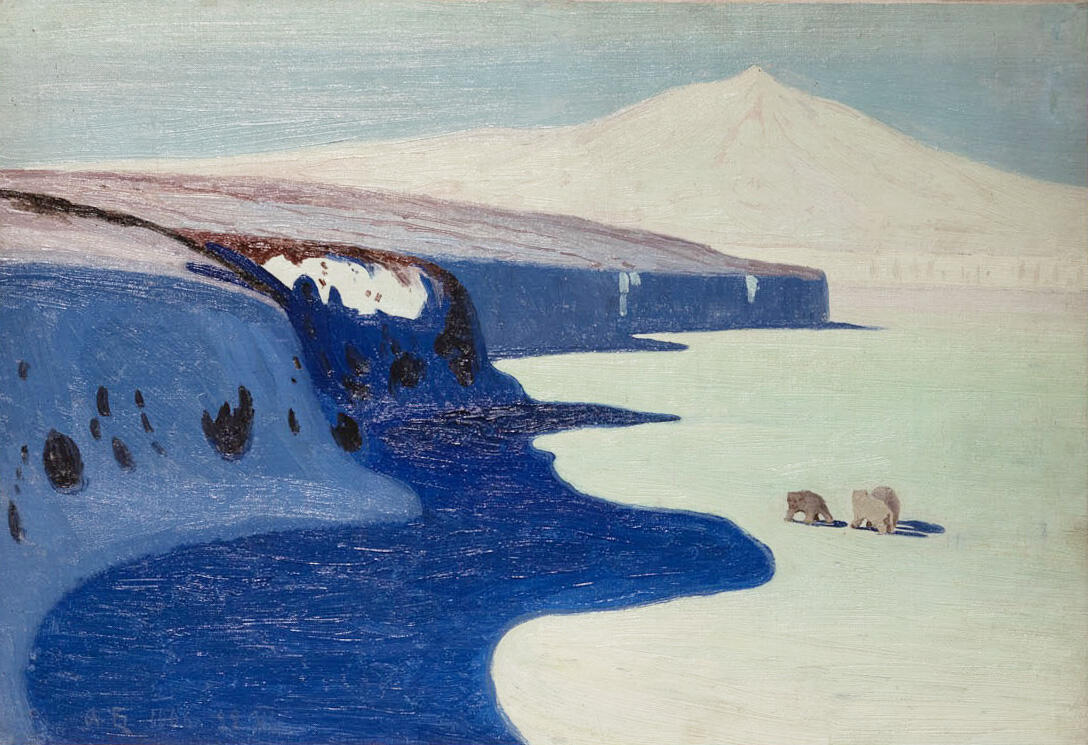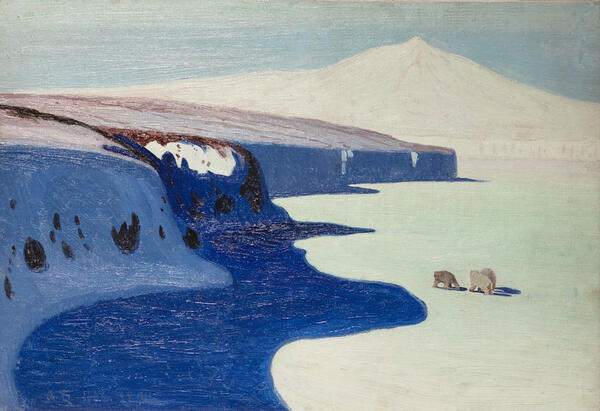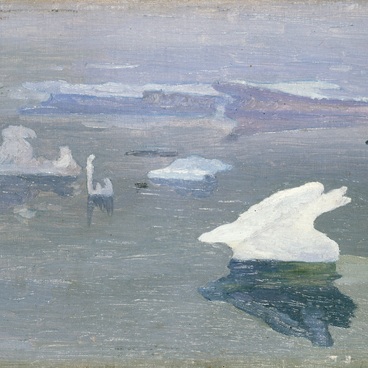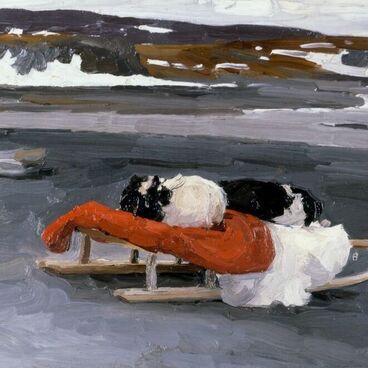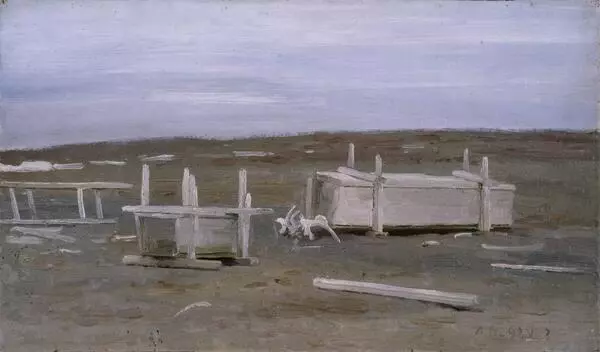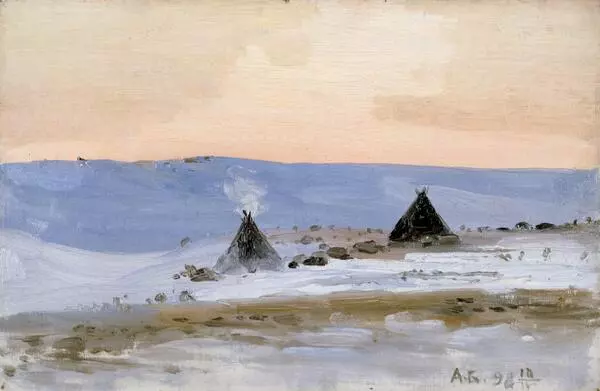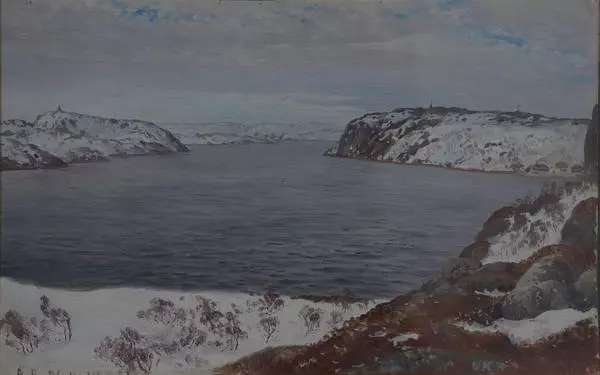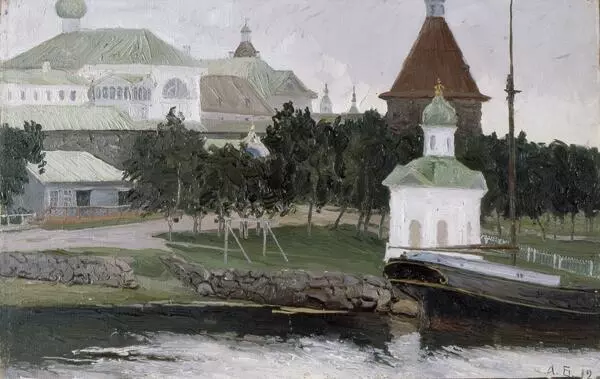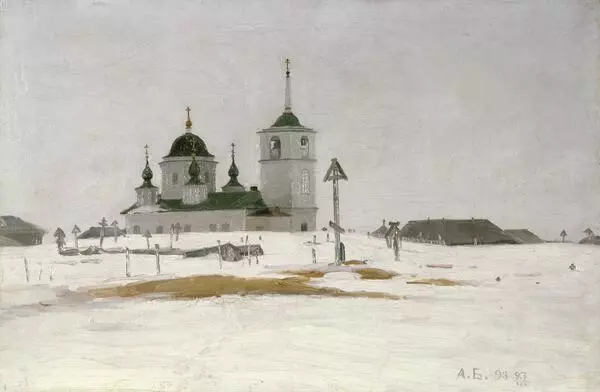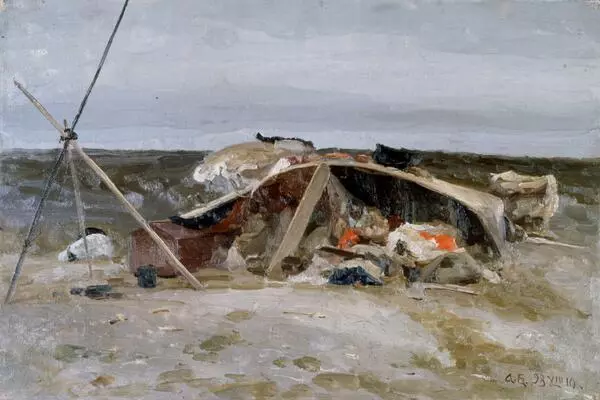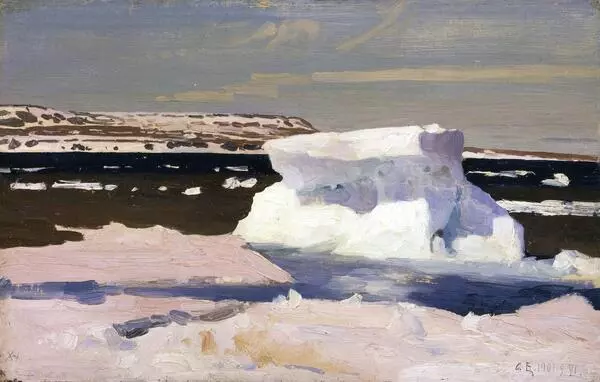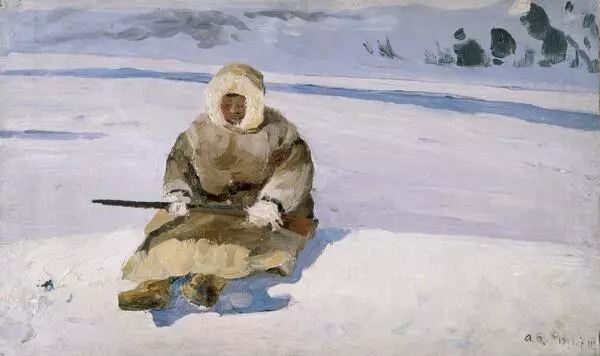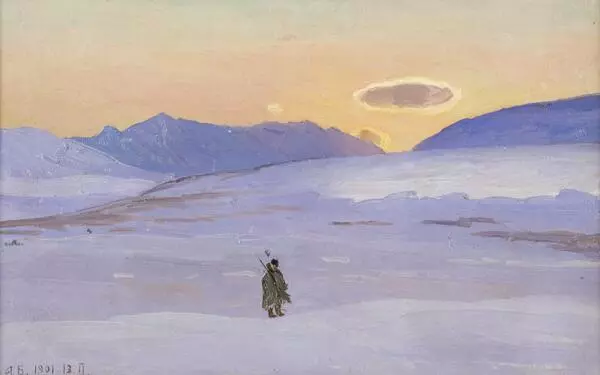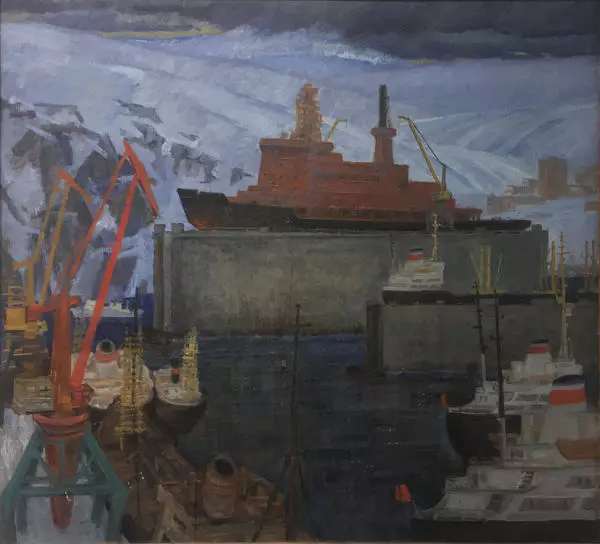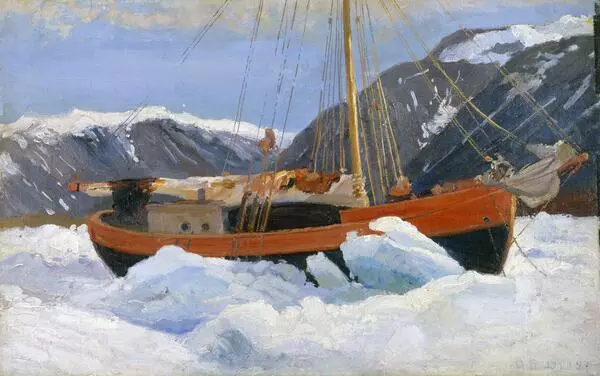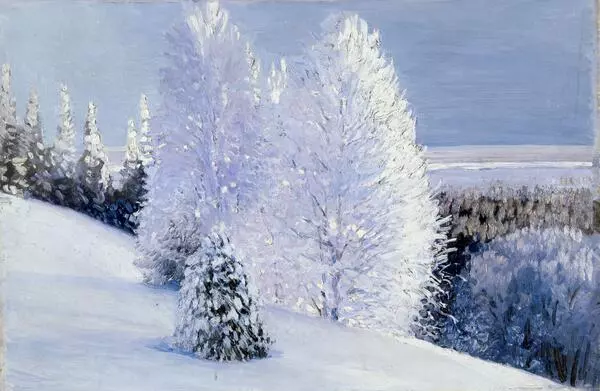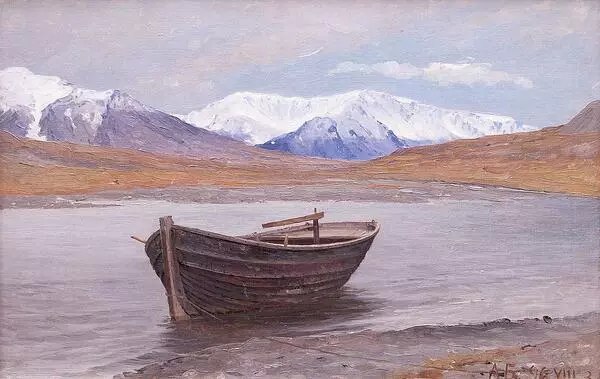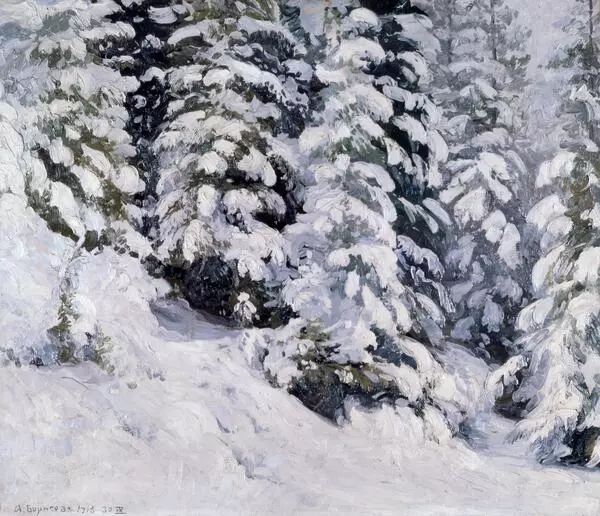Although Alexander Borisov was very busy with his trips to Europe, he still managed to make time for his passion: painting Northern landscapes. In 1906, he painted Bears on the Ice off the Coast of Novaya Zemlya.
In this picture, the influence of his mentor Arkhip Ivanovich Kuindzhi is clearly seen. A lot of young people went through Kuindzhi’s training, but only a few of them became famous nationwide and internationally. However, almost every student of the “master of light” — as Kuindzhi was referred to — admired the unique atmosphere that reigned in his class: affable, cordial, lively and creative. As the saying goes, a teacher is not the one who teaches but the one who people want to learn from.
This is what Borisov wrote about his mentor’s teaching method: ‘For a long time, Kuindzhi did nothing but observe the student’s activity, without interfering or commenting on his work, studying him, trying to understand his inner world, his personality, his inclinations, tastes and affections, so that he wouldn’t lead the student astray and could help him to get established on his path and prevent possible mistakes. Kuindzhi would often stand behind a student, watching brush strokes appearing on the canvas. If he noticed that the student couldn’t manage the colours or the tonality properly, the professor would pick the palette and paint the difficult spot himself. Just a few brush strokes, and the picture came to life. Giving back the palette, he would say: ‘Keep up this tonality! Every picture needs some inner value, and if there isn’t one, it has nothing to it.’ Kuindzhi advised painting small life studies to improve your painting skills, but using studies for a complete picture was strictly forbidden: according to the professor, a picture ought to emerge as a synthesis of the painter’s observations.’
This synthesis is seen in many of the Arctic pictures by Alexander Borisov, which are characterized by a well-structured composition, a peculiar colour range and vivid, striking tones.
In this picture, the influence of his mentor Arkhip Ivanovich Kuindzhi is clearly seen. A lot of young people went through Kuindzhi’s training, but only a few of them became famous nationwide and internationally. However, almost every student of the “master of light” — as Kuindzhi was referred to — admired the unique atmosphere that reigned in his class: affable, cordial, lively and creative. As the saying goes, a teacher is not the one who teaches but the one who people want to learn from.
This is what Borisov wrote about his mentor’s teaching method: ‘For a long time, Kuindzhi did nothing but observe the student’s activity, without interfering or commenting on his work, studying him, trying to understand his inner world, his personality, his inclinations, tastes and affections, so that he wouldn’t lead the student astray and could help him to get established on his path and prevent possible mistakes. Kuindzhi would often stand behind a student, watching brush strokes appearing on the canvas. If he noticed that the student couldn’t manage the colours or the tonality properly, the professor would pick the palette and paint the difficult spot himself. Just a few brush strokes, and the picture came to life. Giving back the palette, he would say: ‘Keep up this tonality! Every picture needs some inner value, and if there isn’t one, it has nothing to it.’ Kuindzhi advised painting small life studies to improve your painting skills, but using studies for a complete picture was strictly forbidden: according to the professor, a picture ought to emerge as a synthesis of the painter’s observations.’
This synthesis is seen in many of the Arctic pictures by Alexander Borisov, which are characterized by a well-structured composition, a peculiar colour range and vivid, striking tones.
